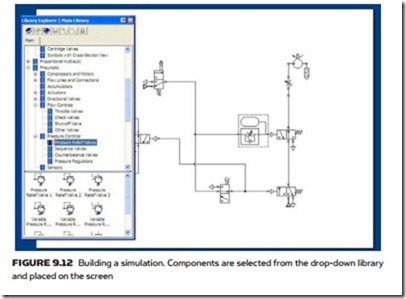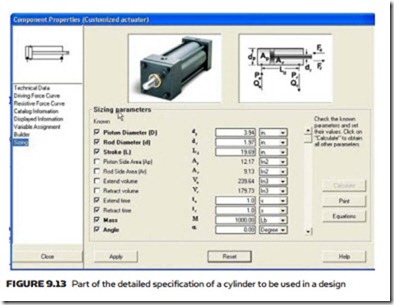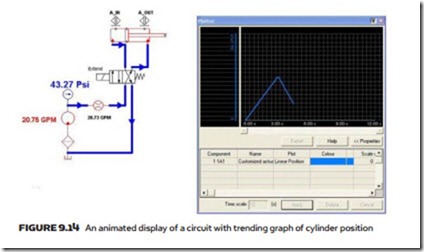computer simulation
Computer simulations are becoming increasingly important for the design of fluid-based systems and for training purposes. All the illustrations in this section have been made using Automation Studio, a sophisticated software package from the Canadian company Famic Technology, which can simulate systems based on hydraulics, pneumatics, electrical, digital and PLC control.
Simulations are designed with a simple drag-and-drop procedure. Components are selected from a drop-down library list, placed on the screen then connected with a mouse, as shown in Figure 9.12.
For a training aid, default values can be chosen for cylinders, valves and pumps, etc. For serious design work all components can be individually specified along with the diameters and lengths of piping. Figure 9.13 shows the specification of some of the design parameters for a cylinder. In addition to the parameters shown, the angle of the cylinder, frictional forces, load inertia and mass, and other detailed characteristics can be entered.
With the system designed on screen it can be tested. The animated operation of the circuit is displayed along with flows and pressures at selected points. Trending graphs can be added as in Figure 9.14 to allow transients and timings to be observed.


